Daigakuimo is a much-loved delight adored for its rich sweetness, crunchy exterior, and soft, crispy inside. Let’s explore the origins of this name and uncover the story behind these delightful university potatoes. Not just that, did you know there are similar recipes known as “junior high school potatoes” and “elementary school potatoes”? Let’s discover further details about this delightful daigaku imo in the article today!
What is Daigaku Imo?
Daigaku Imo is a traditional Japanese sweet made from deep-fried sweet potato pieces coated in a sugary syrup, often flavored with honey. It’s cherished for its crispiness on the outside and soft, sweet texture inside, making it a beloved snack across different age groups.
This dish gained popularity during the Taisho and Showa periods, especially among university students, hence its name “Daigakuimo” or “university potato.” It’s an easy-to-make treat that holds both cultural significance and a place in the hearts of those who enjoy its delightful taste.
Etymology
The name “Daigaku Imo” has an interesting history and multiple origin theories:
Theory 1: College Students’ Preference
One theory suggests that Daigaku Imo gained its name because it was the favorite snacks of university students, particularly during the Taisho and Showa periods. At that time, many university students struggled financially, and sweet potatoes were an affordable and filling option, making them popular among this demographic. While various age groups of people could enjoy daigaku imo, it acquired its name due to its popularity among university students.
Interestingly, there’s a twist in this theory. While the name implies that it was students from the best university in Japan who enjoyed it the most, historical anecdotes suggest that the students specifically fond of Daigaku Imo were from the University of Tokyo, renowned as Japan’s top university. This stemmed from a sweet shop called “Mikawaya” near the University of Tokyo’s Akamon, where fried sweet potatoes with honey became a hit among students.
Theory 2: Students’ Entrepreneurial Endeavor
Another theory proposes that during the Taisho period’s economic downturn, students struggling to pay tuition fees began selling Daigaku Imo as a means to earn money for their education. This entrepreneurial effort might have contributed to the snack’s popularity, reflecting the resilience of students during challenging times.
Theory 3: Trend of Naming Products with “University”
During the Taisho and Meiji periods, there was a trend to prefix “university” to various products. This marketing tactic aimed to attract customers by associating items with higher education institutions, highlighting quality or sophistication. Daigaku Imo might have adopted the term “university” as a part of this marketing trend, signifying the innovation of sweet potato frying with honey during that era.
These theories showcase the intriguing history behind the name “Daigaku Imo,” offering various perspectives on its origin, each adding depth to the story behind this beloved Japanese snack.
History of Daigaku Imo
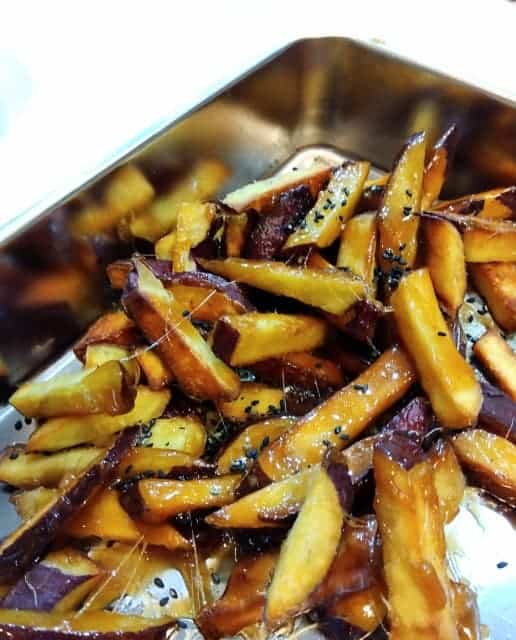
The origin of Daigakuimo’s name has various theories. One suggests that during the Taisho and Showa periods, university students, often struggling financially, found sweet potatoes an affordable and filling food choice, leading to the treat’s popularity among this demographic.
Another theory links its name to a sweet shop, “Mikawaya,” located near the University of Tokyo, where honey-coated fried sweet potatoes became a hit among the students, particularly those attending the prestigious institution.
There’s also speculation that the “university” prefix became a trend during the Taisho and Meiji periods, with various products adopting the term. Most people believe that this trend influenced the naming of fried sweet potatoes to “Daigaku Imo.”
Sweet Potato Varieties in Daigaku Imo
Daigakuimo delights in its sweet sauce and crispy texture, a treat typically made from sweet potatoes. However, the realm of sweet potatoes is vast, featuring varieties like “Beni Haruka,” “Annoimo,” and “Naruto Kintoki.” Surprisingly, despite the shared category, each type brings forth distinct flavors when crafted into the same dish.
Exploring the nuances of sweet potato varieties, the officially registered ones total around 60 diverse types. These sweet potatoes can be broadly categorized into three textures: “Hokuhoku type,” “sticky type,” and “moist type,” each offering unique culinary experiences.
Hokuhoku type (Fluffy type)
Firstly, the “Hokuhoku type” boasts a smooth texture with lower moisture content, perfect for enthusiasts of classic baked sweet potatoes. Popular varieties in this category include Naruto Kintoki, Goroshima Kintoki, and Beni Azuma, among others.
Sticky type
Conversely, the “sticky type” with higher water and sugar content delivers a creamy texture, ideal for creating baked sweet potatoes with an unprecedented consistency. Notably, Annoimo, gaining immense popularity, serves as both a baked sweet potato and a sought-after ingredient for sweets.
Moist type
Lastly, the “moist type,” striking a balance between the Hokuhoku and sticky types, offers moderate sweetness and a velvety texture. Its elegant sweetness makes it a fitting choice for crafting sweet delicacies like sweet potatoes and sweet yokan. Representative varieties include Silk Sweet, Beni Haruka, and Aikomachi, among others.
Daigaku Imo Q&A
- Why is Daigaku Imo called “University Potato”?
-
The name “Daigaku Imo” translates to “University Potato.” This name originated from university students’ fondness for this affordable, filling snack during the Taisho and Showa periods. Despite several theories about its name, the association with university students’ preferences remains prominent.
- What distinguishes the traditional preparation of Daigaku Imo?
-
The traditional method involves cutting sweet potatoes into chunks, deep-frying them until golden brown and crispy, and then coating them in a sweet syrup made from sugar, soy sauce, and honey. This delightful treat is often garnished with sesame seeds.
- Are there regional variations of Daigaku Imo in Japan?
-
Yes, different regions across Japan have their unique twists on Daigaku Imo. For instance, in Ibaraki Prefecture, where sweet potatoes are abundant, variations might include using local sweet potato varieties or experimenting with various coatings or flavors.
How to make Daigaku Imo?
Ingredients
| Ingredients | Measurements |
|---|---|
| Sweet potato | 250-300g |
| Salad oil | 5 tbsp |
| Sugar | 4 tbsp |
| Soy sauce | 1/3 tsp |
Instructions
Cut the sweet potato into pieces, leaving the skin on.
If frying immediately, no need to soak in water. In a frying pan, combine salad oil, sugar, soy sauce, and sweet potatoes over medium heat. Once foam appears, reduce heat slightly. Fry occasionally for 6 to 7 minutes, changing the potato direction. When they color, reduce to low heat.
When cooked, cut the oil while mixing accumulated sugar at the pan bottom. While hot, sprinkle ground sesame seeds on top.
Recommended Restaurants/Stores
Daigaku Imo Chibaya (大学いも千葉屋)

“Chibaya” is a specialty store for university potatoes in Asakusa. They are known for selling out quickly in the mornings and offer large-cut sweet potatoes with a crispy texture. Their university potatoes are characterized by a rich sugar content, making them quite addictive.
Oimoya-san Koshin (おいもやさん興伸)
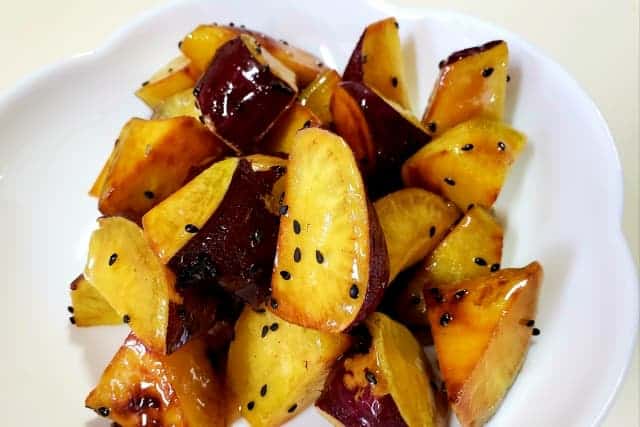
“Oimoya-san Koshin” is a sweet potato confectionery specialty store managed by Kawako Shoten, a sweet potato wholesaler established in 1869. As it’s managed by a wholesaler, they use carefully selected seasonal sweet potatoes. Their university potatoes are generously covered with molasses, creating a delightful experience.
Gōkaku-ya (大学いもの合格屋)
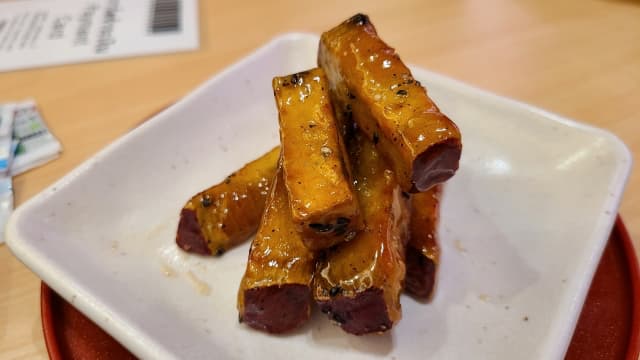
“Gōkaku-ya” is a renowned university potato store near JR Itabashi Station. Despite having a new tenant, it’s actually a long-established store that has been cherished in Itabashi for nearly 30 years. They offer traditional old-fashioned university potatoes made by the owner, whose grandfather is the founder of “Matsuya,” a famous university potato in Oyama.
Conclusion
Daigaku Imo is more than just a tasty snack; it’s a part of Japan’s history and a favorite treat for many. Whether you’re cooking it at home or trying it at a recommended restaurant, this sweet potato dish connects us to Japan’s past and brings joy in the present. Its different versions show how food can be a part of traditions, telling stories through flavors. Daigaku Imo has a lasting appeal that brings a bit of history to every bite, making it a special treat worth enjoying and sharing with others. Let’s find out more about Daigaku Imo through our recipes or by visiting the recommended restaurants listed above!
See below for other delicious Japanese recipes!
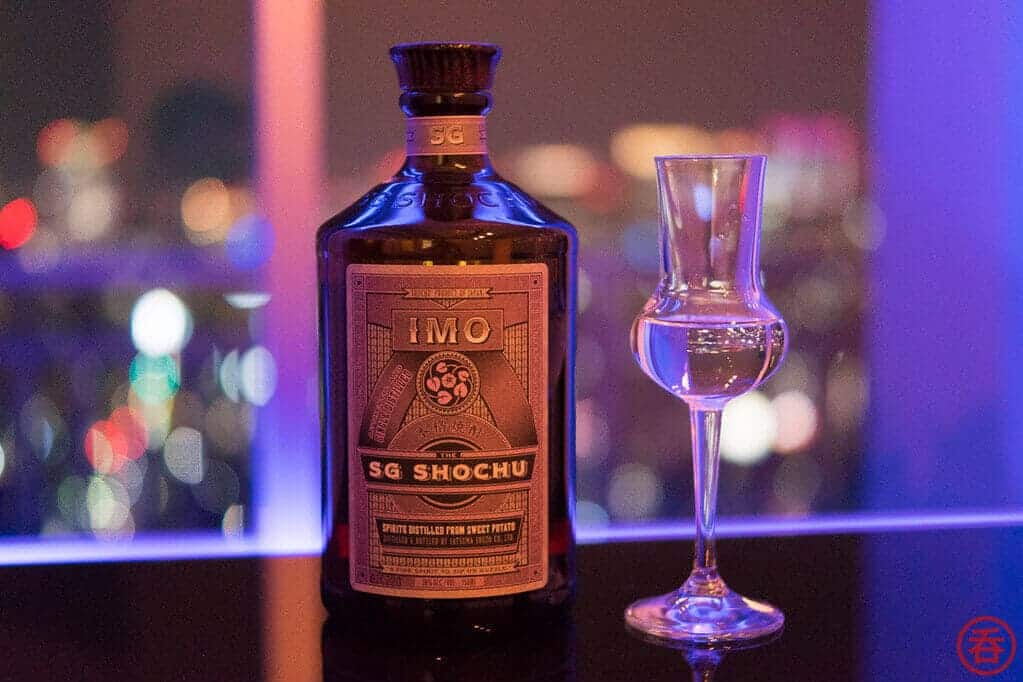
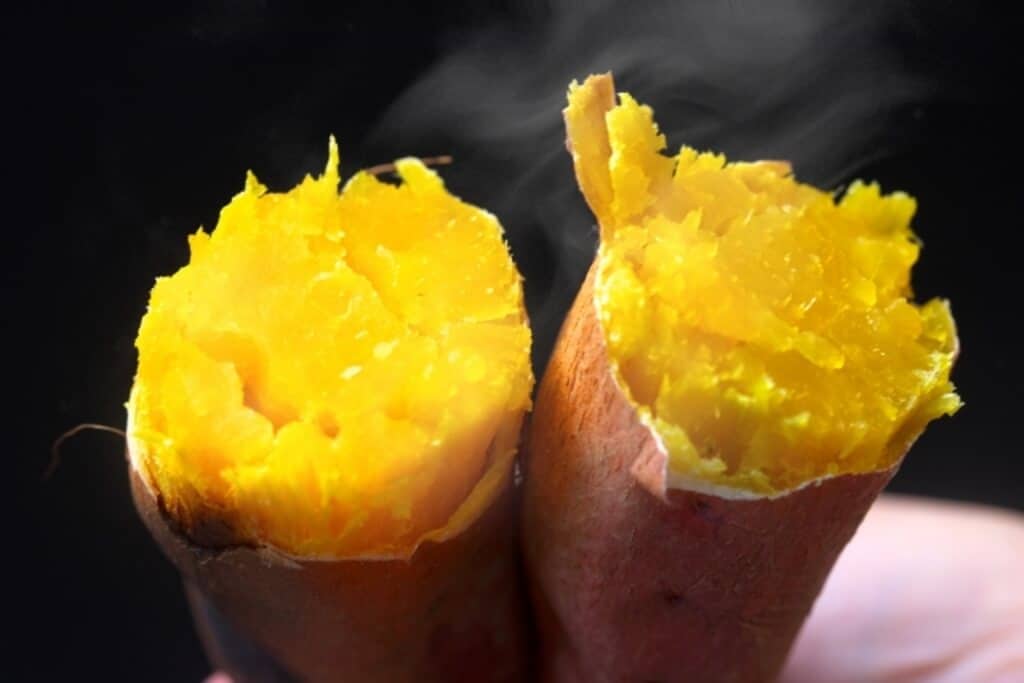
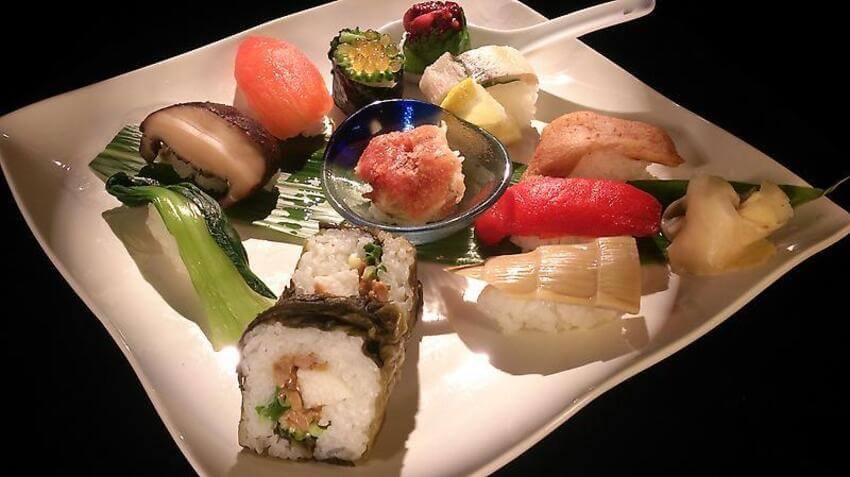





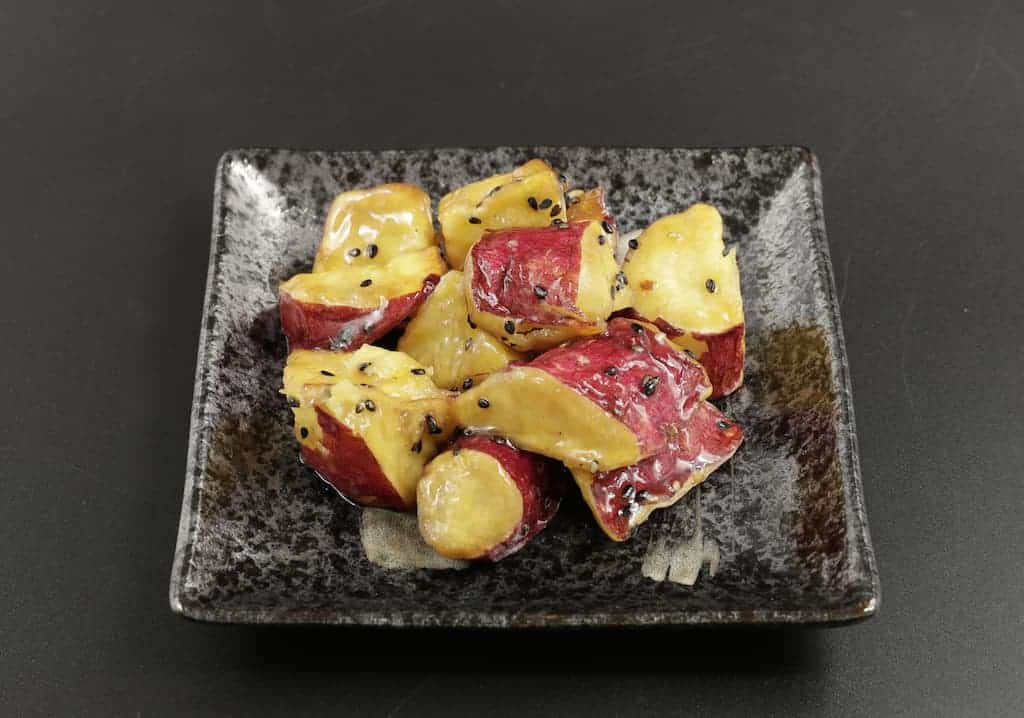
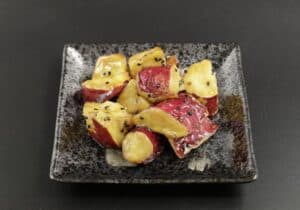
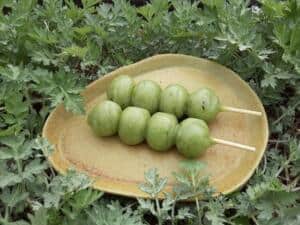
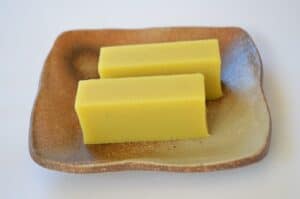
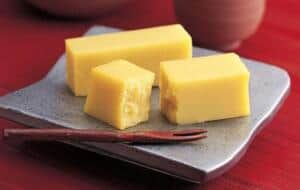
Comments